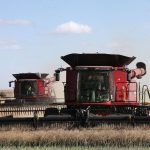As it has every year since 1993, Canadian farm debt grew last year, hitting a record $52.3 billion – double its level just a decade ago.
And Statistics Canada reported May 28 that in 2006, debt servicing charges increased more than 16 percent to $2.7 billion, one of the largest farm expense increases and the sharpest increase in debt servicing charges since the double-digit inflation year of 1981.
“It was a major jump in costs, a combination of an increased debt base and an increase in some interest rates,” said Statistics Canada economist Bernie Rosien.
Read Also

Agriculture ministers agree to AgriStability changes
federal government proposed several months ago to increase the compensation rate from 80 to 90 per cent and double the maximum payment from $3 million to $6 million
In absolute terms, Canada’s farm debt last year increased by $2.3 billion.
Critics saw it as a key underlying weak spot in Canada’s farm economy. Farm income is volatile, debt servicing charges are constant and growing while falling American farm debt makes Canada’s debt servicing costs a competitive disadvantage.
“The farm debt level is so massively high that it is scary,” said Liberal agriculture critic Wayne Easter, who faced the crushing burden of high interest rates on high farm debt when he was a Prince Edward Island dairy farmer in the 1980s. “It makes the sector so vulnerable.”
Canadian Federation of Agriculture president Bob Friesen said in an interview the constantly increasing farm debt is an “unbelievable” burden on farmers that leaves them susceptible to interest rate increases and constantly escalating costs.
He said it is impossible to analyze how much is “good debt” taken on to improve farm efficiency and how much is “bad debt” incurred to try to keep the farm afloat.
“There is no breakdown and I suspect some of this is mortgage restructuring that means a farmer is having trouble servicing the debt he has and negotiates new terms,” he said.
Governing politicians saw the growing debt numbers in a different light.
Federal agriculture minister Chuck Strahl said growing debt has to be watched but growing asset values help compensate by controlling debt-to-asset ratios.
Saskatchewan agriculture minister Mark Wartman said he considers higher debt as a sign of farmer optimism as they invest in expansion or new equipment. “Overall, my read is that farmers are generally quite hopeful.”
While Saskatchewan’s debt level was relatively stable, it increased sharply in British Columbia and Manitoba last year.
Easter scoffed at the notion that debt for investment was a sign of optimism.
“Farmers have been living off their equity and they need to replace equipment held together with binder twine,” he said. “They are going into debt to replace rundown equipment with no guarantee that the increased debt will pay for itself.”
















